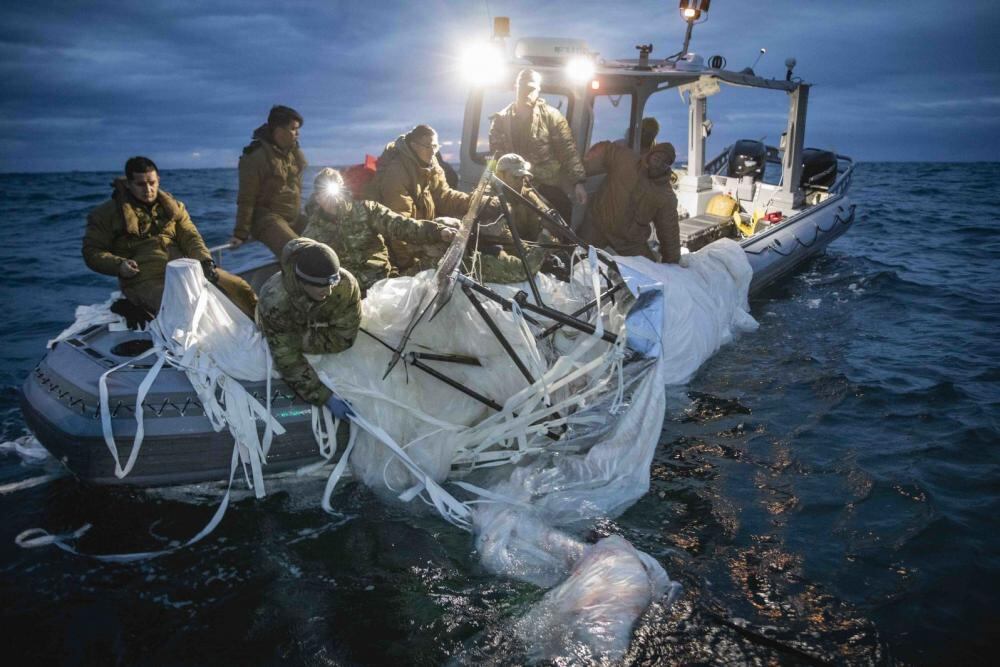The U.S. Navy kicked off its week by gathering the remains of the Chinese surveillance balloon Monday, after a U.S. F-22 Raptor fighter shot it down off the coast of South Carolina on Saturday.
The U.S. first detected the high altitude surveillance balloon on Jan. 28, and U.S. leaders claim similar devices were previously employed during the Trump and Biden administrations. But “enhanced” surveillance of airspace implemented by President Joe Biden’s administration facilitated spotting this most recent spy balloon, White House National Security Adviser Jake Sullivan told reporters Monday.
The dock landing ship Carter Hall is spearheading the Navy’s recovery efforts and collecting debris near where the balloon collapsed, approximately six miles off the coast of South Carolina. The oceanographic survey ship Pathfinder is also “mapping the ocean floor using sonar” in the search, U.S. Fleet Forces Command said on Twitter on Monday.
Additionally, sailors from Explosive Ordnance Disposal Group 2, equipped with a mobile diving and salvage team, are utilizing at least one unmanned underwater vehicle to recover the balloon’s remains. Coast Guard cutters Venturous, Nathan Bruckenthal and Richard Snyder are also involved in collecting debris, as is Coast Guard aviation support.
Debris collection started Monday, after rough sea conditions prevented the Navy from launching recovery efforts on Sunday.

The Pentagon referred questions from Navy Times about the operation to North American Aerospace Defense Command and U.S. Northern Command, which did not respond to a request for comment from Navy Times at the time of this writing.
Before Monday, U.S. officials had said that at least three times during the Trump administration and at least one other time during Biden’s tenure as president, balloons have crossed into American airspace, but not for this long. In those instances, the United States determined the balloons belonged to China only after they had left U.S. airspace, said Gen. Glen VanHerck, head of U.S. Northern Command.
“I will tell you that we did not detect those threats,” VanHerck said of his military command. “And that’s a domain awareness gap that we have to figure out.”
He added that the U.S. intelligence community “after the fact” informed his command about the balloons.
According to VanHerck, the debris field from the downed balloon measures approximately 1500 square meters, situated in water roughly 50 feet deep. The balloon measured up to 200 feet tall, outfitted with sensors and equipment, he said.
“The payload itself, I would categorize that as a jet airliner type of size, maybe a regional jet. ... Probably weighed in excess of a couple thousand pounds,” VanHerck noted.
VanHerck also warned against the public collecting any debris that may wash onto the shore amid changing ocean currents.
“I would remind you that due to ocean currents, it’s possible that there may be some debris that does flow to shore,” VanHerck said. “And so what we would ask of the public ... is avoid contact, contact local law enforcement immediately to take care of any of that debris.”
The Associated Press contributed to this report.








